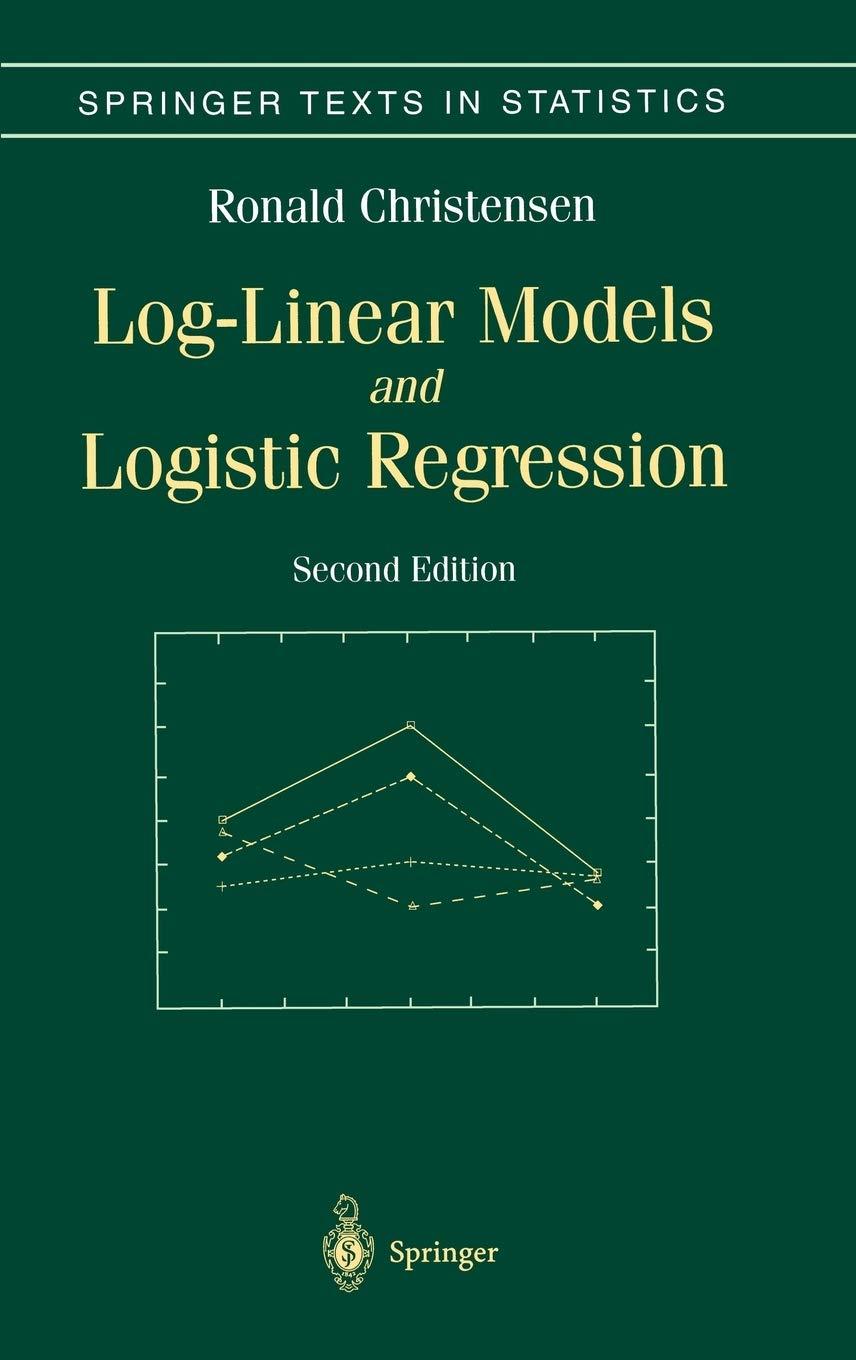Waite (1911) reports data on classifications of general intelligence made for students from a secondary school in
Question:
Waite (1911) reports data on classifications of general intelligence made for students from a secondary school in London. Classifications were made after two different school terms and each student was classified by two instructors. Classifications were based on Pearson’s criteria as explained in Exercise 2.6.3.
The data are given in Table 10.1.
The entry for Term 1, row C, column D of 55 indicates that there were 55 people who were classified as C by one instructor and D by the other.
We want to develop interesting log-linear models for such data. For the moment, consider only Term 1. A model of interest is that the two teachers have the same marginal distribution of assigning various classifications and that they assign them independently. Write the marginal probabilities for the categories C, D, E, F, and G as p1, p2, p3, p4, and p5, respectively.
What are the table probabilities pij in terms of the marginal probabilities?
Take logs of the pij ’s to identify a log-linear model. Write the log-linear model log(mij ) = αi + βj for these data in matrix form. Incorporate the restrictions αi = βi to get a model log(m) = Xγ and fit the model to the data of Table 10.1. What conclusions can you reach about the data?
TABLE 10.1. Intelligence Classifications Term 1 CD E FG C 13 55 29 1 0 D 123 326 24 0 E 421 253 17 F 107 31 G 5 Term 2 CD E FG C 17 51 17 1 0 D 129 479 46 5 E 700 343 28 F 109 72 G 21
Step by Step Answer:

Log Linear Models And Logistic Regression
ISBN: 9780387982472
2nd Edition
Authors: Ronald Christensen






